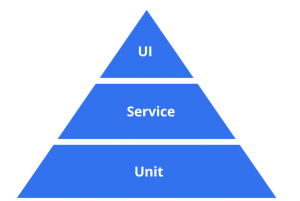Software Test Automation
For many years, test automation has been a part of the Software Testing industry, and it continues to grow and expand with new ‘easy to use’ and ‘code free’ platforms becoming available. It can seamlessly changes the way we test software products, and it can execute mundane repeatable tests to allow for manual testing to concentrate in higher risk areas. It’s important to automate many parts of the testing process, but only those that are a good return of investment – there is no benefit to automating a test or task that is only run once a sprint as it is likely to have ‘cost’ more time to create and maintain that automated test case than it will to run it each time. Also tests that are quicker to run manual also do not need to be automated, it can be a misconception that everything and anything can and should be automated, this idea should be challenge by the Test Automation Engineer with clear set of expectations and goals from the outset.
Implementing test automation
As it becomes more popular for Salesforce Consultancies and other companies to use the Agile Methodology for software development, it becomes sensible to implement test automation to assist with regression testing before and after the deploy code to an existing Salesforce org.
There are times when an automated testing pyramid strategy is implemented. There are 3 levels to the pyramid. First, there is the unit testing, this is at the base, and then there is the Service layer or as it’s also known, the API testing layer. After the Unit and Service layers have been executed, the GUI testing is next at the top of the pyramid. The integrated API and GUI testing solutions can be automated most of the time, and you get to enjoy the experience a lot more.

The pyramid states that tests on the lower layers are cheaper to write and maintain, and quicker to run. Tests on the upper layers are more expensive to write and maintain, and slower to run. Therefore your testing implementation should have lots of Unit Tests, some Service tests, and few UI tests.
Test Automation Benefits
Test Automation has major benefits and saves time from doing mundance tasks and regression test execution but it can also be an expensive benefit. To understand how much of a benefit to your Consultancy you will need to calculate the Return of Investment (ROI). There are a few ways that this can be done but the following is one of the accepted methods:

Savings – Cost of Manual Testing subtract Cost of Test Automation
Investment – Tool licenses + Installation & Configuration
With manual testing, you have complete control over the way you are executing any action. On top of that, you can get more visual feedback during the process. However, with Test Automation you can execute multiple tests at a time, obtain feedback with ease and ensure that every development has scheduled regression tests executed upon deployment.Other Benefits of Test Automation include:
- Accelerated Results
- Quick Feedback
- High Overall Test Coverage
- Faster Time to Market
Test Automation Tools
As we mentioned before there are countless test automation platforms that are becoming available to the end user, some require a coding background to implement while others are following the popular ‘no code, just clicks’ approach. But remember all platforms will need an automation framework and maintenance for any changes to your platform and dedicated employees should be resourced to these important tasks.
Provar
Provar is a code-free, point-and-click automated Salesforce testing solution. It allows you create test scenarios for your end to end testing phase for your Salesforce implementation. Provar is specifically designed for Salesforce so it is fully compatibility and will always be aligned to the regular Salesforce Releases and therefore your automation test scripts should not be impacted. Provar also identifies Salesforce page layouts, list views and related lists with ease, so that your automation test scripts do not break when the Lightning dynamic references in Salesforce change.
Mabl
Mabl is a test automation platform that using Machine Learning to assist with identifying elements on your page. It is very easy to use and become proficient at. With its auto-healing test cases it can save time by reducing maintenance overheads. Fully managed in the cloud, and with good support it is a good choice for a company looking for a codeless automation solution.
Conclusion
Remember, though you cannot and should not be aiming to automate everything. Automated testing cannot tell you how your solution feels to a user, or ‘think outside the box’ and follow different workflows and user paths. You should be automating your repetitive tests and potential pain points to allow for more specific manual testing to take place.
Also, choosing a Test Automation Tool is a challenge in itself, with many to choose from there needs to be adequate reviews of each in order to fully evaluate which is best for you company. Make sure to consider the lack of expertise required to be competent with the tool, the tools that provides the best test coverage and obviously the cost of the tool and impact to your team budget.

A Certified Salesforce Administrator, Salesforce Einstein Analytics and Discovery Consultant, ISTQB® Certified Tester Advanced Level, Jitterbit Foundations and Jitterbit Core Certified QA Test Automation Manager who is also an experienced creative all-rounder with enthusiasm and the proven ability to understand client needs and deliver satisfying solutions. A thirst for new technology and modern Quality Assurance and Testing techniques keeps me aspiring to learn at every opportunity. My current role is at Publicis Sapient who are an official Salesforce Platinum Partner. Publicis Sapient provide Salesforce expertise and strategic thinking that enables organisations to transform their business to Cloud-based technology.

